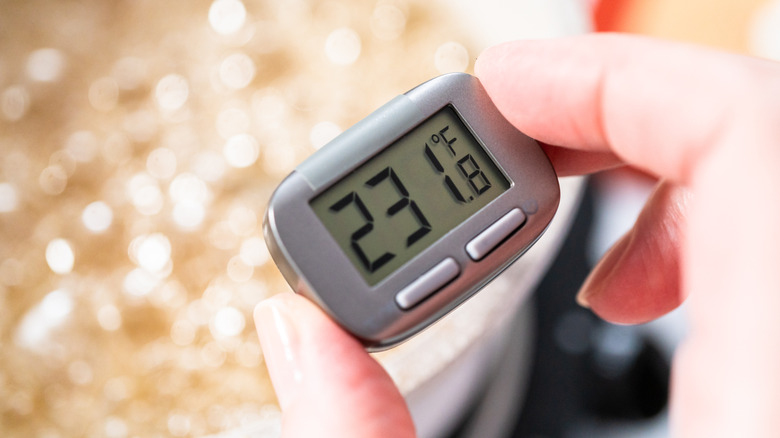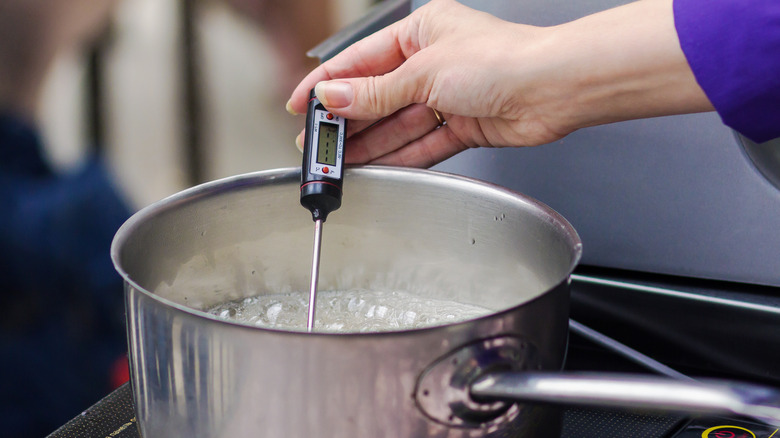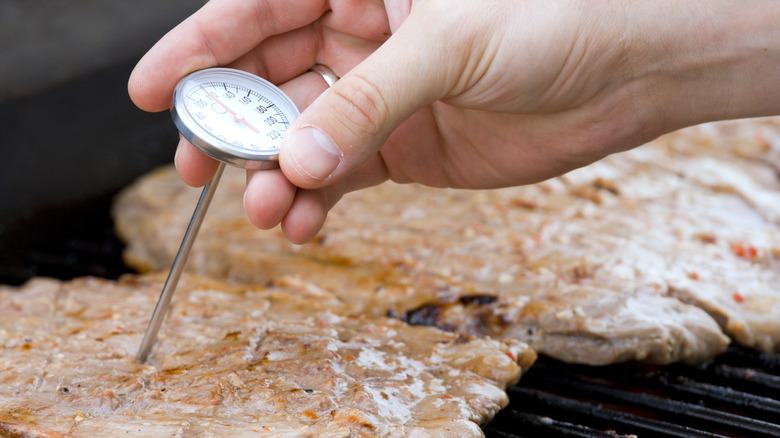Can You Use A Candy Thermometer To Check Meat Temperature?
One thing candy and meat have in common is that they require thermometers to make sure they're cooked to perfection. While it's possible to prepare meat and make candy without using thermometers, these tools ensure an accurate temperature reading so your finished dish turns out the way it should. (Nobody wants to end up with undercooked chicken or burnt caramel.) If you already own a candy thermometer, you may have wondered if it's okay to use that tool to check meat temperature — or vice-versa with a meat thermometer and candy. The answer? Don't do it.
While many thermometers may look and act similarly, they're not all made the same. Meat thermometers and candy thermometers each have quirks and are crafted for specific uses. It's important to use these tools for their intended purposes, or you may end up getting a misread on your food's temperature or even breaking the thermometer.
How candy thermometers work
Candy thermometers are used to check the temperature of substances that can get exceptionally hot, such as molten chocolate, bubbling caramel, or boiling sugar. Because of this, candy thermometers are able to measure temperatures upwards of 400 degrees Fahrenheit. Accurate readings are exceptionally important on candy thermometers because working with hot sugar can be finicky. And depending on how high of a temperature you boil the sugar, it will reach a different "stage" of heating (and be better for certain types of candy).
Due to the high temperatures involved in candy-making, candy thermometers are typically long and thin with rounded or flat bases. Because they aren't meant for piercing meat, the probe typically does not have a sharp tip. If you tried to use a candy thermometer on a roast or turkey, you'd likely have a hard time getting it into the flesh.
Candy thermometers can, however, be used to measure the temperature of hot oil for deep frying.
How meat thermometers work
Meat thermometers don't need to measure temperatures as high as 400 degrees Fahrenheit; typically, these thermometers measure to about 200 degrees Fahrenheit. Meat thermometers also tend to have a probe with a sharp tip that allows the tool to slide easily into the center of whatever meat you're cooking, be it a huge rack of lamb or a small filet mignon. Unlike candy thermometers, these probes are often shorter and thicker, built to be able to stick out of the side of a chicken or other meat cut without falling out or breaking.
Though other varieties of meat thermometers do exist, such as instant read thermometers with a slightly longer, thinner probe and even wireless digital thermometers that you can monitor with an app on your phone, all of these thermometers are made for meat. Using a candy thermometer may not yield you the same results, even if you can get the candy probe properly into the meat.
If you need a meat thermometer, stick with one that's built for roasting and grilling.


